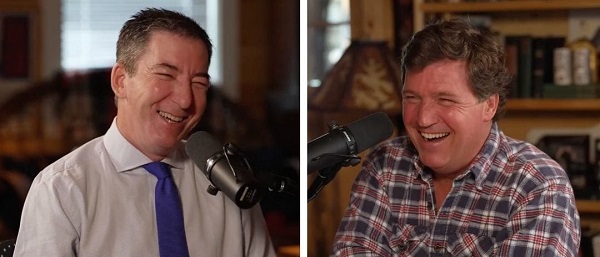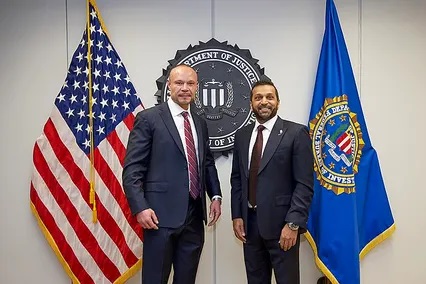News
UDPATE and correction: When Emergency Lights come on, do you know what to do? Here’s a refresher.

Please note a correction below in bold.
- “Motorists must slow down to 60 kilometres per hour, or less if the posted speed limit is lower, when passing emergency vehicles or tow trucks stopped with their lights flashing.”If you are passing an emergency vehicle parked on the side of the road, remember, any road with a posted speed limit as 80 km/h or upwards means you must slow down to 60 km/h, whereas a road with a posted speed limit of 79 km/h or lower requires you to slow down to 40 km/h.
Here’s a timely update from the Parkland RCMP. I was driving around the city this weekend and saw two instances where an ambulance, with siren and flashing lights on, made its way through traffic. There were no real issues that I could see, because traffic was light. But it was obvious that there was a ton of confusion as to what to do. It’s one thing at an intersection and you’re stopped … you start to crowd right, and try to make a path.
But what about if you’re on the QEII travelling at 110 kph .. do you pull over and stop? Do you slow down? How slow?
Hopefully you’ll find some clarification in the article below and be a safer driver as a result of it.
_________________________________________________________________________________
Parkland RCMP – Move over and stop for emergency responders
Spruce Grove, Alta. – Parkland RCMP would like to remind the public of the importance of pulling over and stopping for flashing emergency lights and sirens. The Alberta Traffic Safety Act states: when an emergency vehicle (ambulance, fire, police or peace officers) is approaching you from any direction and is sounding a siren, you must yield the right-of-way.
If you hear a siren or see flashing emergency lights:
- Clear the intersection.
- If you are driving on a road with one or two lanes, pull over on the right side of the road.
- Remember to use your signal.
- If you are driving on a road with three or more lanes, clear the intersection and move your vehicle to the nearest side of the road.
- If you are in the centre lane, pull your vehicle over to the right side of the road, come to a complete stop and wait for the emergency vehicle to pass you.
- Move right or left to the nearest curb on 1-way streets.
- Emergency vehicles have the right-of-way and take precedence over all other traffic. Keep to the side of the street until they have safely passed and watch closely for additional emergency vehicles approaching from behind.
- Don’t enter an intersection until the emergency vehicle is completely through it, even if you have a green light. The only exception to this rule is when a peace officer gives you other directions.
- Remember, you must not follow within 150 m of any emergency vehicle that has its siren or lights operating
- Be considerate of other drivers that have pulled over in front of you.
- “Motorists must slow down to 60 kilometres per hour, or less if the posted speed limit is lower, when passing emergency vehicles or tow trucks stopped with their lights flashing.”If you are passing an emergency vehicle parked on the side of the road, remember, any road with a posted speed limit as 80 km/h or upwards means you must slow down to 60 km/h, whereas a road with a posted speed limit of 79 km/h or lower requires you to slow down to 40 km/h.
- Failing to slow down puts emergency workers, including tow truck drivers and other motorists at risk of serious injury or even death.
If you fail to slow down for emergency vehicles or tow trucks parked road side with emergency lights flashing, fines for speeding are double. If you fail to yield to emergency vehicles with emergency lights and sirens engaged, you could receive a fine and demerits.
By remembering these rules of the road, you will help emergency responders get to the scene as quickly as possible and keep emergency personnel safe who are assisting road side.
If you observe drivers who are putting emergency responders at risk, please contact the Parkland RCMP at 825-220-7267 or your nearest police department. If you wish to remain anonymous, you can contact Crime Stoppers at 1-800-222-8477 (TIPS), online at www.P3Tips.com or by using the “P3 Tips” app available through the Apple App or Google Play Store.
Read more stories on Todavyille Edmonton.
Daily Caller
Watch As Tucker Carlson And Glenn Greenwald Get A Good Laugh Over CNN Pretending Biden’s Decline Is Breaking News


From the Daily Caller News Foundation
By Hailey Gomez
During a podcast Friday, Daily Caller News Foundation co-founder Tucker Carlson and independent journalist Glenn Greenwald couldn’t stop laughing over CNN’s sudden realization of former President Joe Biden’s mental decline.
CNN’s Jake Tapper along with Axios’ Alex Thompson released their book, “Original Sin,” on May 20, which details Biden’s cognitive slide over the last four years — a concern Republicans had raised even before the 2020 election. While appearing on “The Tucker Carlson Show,” Carlson joked that Greenwald had been “scooped” by CNN on Biden’s mental fitness.
“So you are, I think, the dean of alternative media. You’ve been doing this longer than anybody that I know personally. So it must be a little weird to get scooped by CNN on Joe Biden’s dementia, like you had no idea,” Carlson said. “None of us knew.”
“None of us knew,” Greenwald teased. ” There was that debate, and we were all shocked, but we were told he had a cold. So I was like, ‘OK, he’s on some cold medication. Who hasn’t been there before? It makes you a little dragged, a little groggy, a little just like dragged.’ But no, now Jake Tapper has uncovered the truth. It turns out Joe Biden was in cognitive decline.”
Sources told Tapper and Thompson that Biden’s mental fitness had declined rapidly during his time as president, with his mental state becoming so severe at one point that aides discussed putting him in a wheelchair.
WATCH:
Tapper has faced pushback from both Democrats and Republicans over the timing of his book and the revelations it includes. The CNN host has long defended the former president.
Carlson went on to joke with Greenwald about how he believed Tapper gathered the material for the book.
“Just a hardcore shoe leather investigative reporting,” Greenwald joked. “He’s working his sources, calling all the people in Washington, digging up FOIA documents.”
“It’s one of those things where you kind of can’t believe what you’re witnessing because Jake Tapper is pretending to have uncovered a scandal that he himself led the way in the media, or one of the leaders in the media, in covering up,” Greenwald added. “To the point where if somebody would go on his show and say ‘Joe Biden is obviously in cognitive decline.’ He would say ‘How dare you bully kids who stutter?’”
Greenwald went on to reference how Tapper had accused President Donald Trump’s daughter-in-law, Lara Trump, of “mocking” the former president over his stutter during a 2020 interview.
Despite Lara Trump pointing to what she believed were signs of Biden’s problems, Tapper dismissed her remarks at the time, saying she had “no standing to diagnose somebody’s cognitive decline.”
In addition to Lara Trump, Tapper also dismissed former Democratic presidential candidate Dean Phillips during a 2024 interview after Phillips expressed his “concerns” about Biden running for a second term.
“Obviously, he wanted Biden to win desperately and would not tolerate anyone going on the show and saying that Biden was in cognitive decline,” Greenwald said. “Now he’s making millions of dollars off a book.”
Following the media coverage of Tapper’s and Thompson’s book, Biden appeared to tell reporters on Friday he could “beat the hell out of” the two journalists.
International
Bongino announces FBI will release files on COVID cover up, Mar-a-Lago Raid and more

 MxM News
MxM News
Quick Hit:
FBI Deputy Director Dan Bongino announced that the bureau will begin releasing information on a number of controversial investigations long shielded from public view.
Key Details:
- Bongino said the FBI is clearing information on high-profile cases, including COVID, Crossfire Hurricane, and the Trump Mar-a-Lago raid.
- The bureau is actively working with the DOJ on releasing Epstein case details and cracking down on child sexual abuse content.
- Bongino dismissed media attacks on FBI Director Kash Patel as “verifiable lies” and accused the press of fabricating stories.
Diving Deeper:
FBI Deputy Director Dan Bongino disclosed on Saturday that the bureau will begin releasing information previously kept under tight wraps, including cases that many Americans believe were swept under the rug for political or institutional protection.
Bongino, a former NYPD officer, Secret Service agent, and outspoken conservative commentator, took to X to announce that his office has already started cooperating with Congress and the public by providing long-requested information. Among the cases he cited: the attempted assassination of Rep. Steve Scalise, the Nashville Christian school shooting, the Crossfire Hurricane probe, and the COVID-19 origins and cover-up.
“This isn’t business as usual anymore,” Bongino wrote. “We’re clearing information to Congress, and the public, as quickly as possible.”
One of the most politically explosive revelations relates to the FBI’s handling of the Mar-a-Lago raid, an unprecedented move to search the home of the sitting president’s top political opponent, President Donald Trump. Bongino’s announcement signals that internal communications and case files may soon be scrutinized by congressional investigators and the public alike.
Bongino also confirmed that the agency is working closely with the DOJ on the Epstein case, noting the overwhelming volume of child sexual abuse material that must be reviewed. He emphasized that protecting children remains a core mission of the FBI under his and Director Kash Patel’s leadership.
“Operation ‘Restoring Justice,’ where we locked up child predators and 764 subjects, in every part of the country, is just the beginning,” he wrote. “Think twice if you’ve targeted children, because you’re next.”
The deputy director didn’t hold back in pushing back against media reports that characterized Patel’s leadership as unserious or performative. “The media continue to entirely fabricate stories,” Bongino wrote, describing reports about Patel skipping briefings and attending sports events as “a verifiable lie.”
He defended Patel’s work ethic, noting that the FBI director routinely works 10–12 hour days and meets with top counter-terror officials and global law enforcement partners.
-

 Brownstone Institute2 days ago
Brownstone Institute2 days agoFDA Exposed: Hundreds of Drugs Approved without Proof They Work
-

 Energy1 day ago
Energy1 day agoChina undermining American energy independence, report says
-

 Business1 day ago
Business1 day agoTrump on Canada tariff deadline: ‘We can do whatever we want’
-

 Automotive1 day ago
Automotive1 day agoElectric vehicle sales are falling hard in BC, and it is time to recognize reality.
-

 Business1 day ago
Business1 day agoEurope backs off greenwashing rules — Canada should take note
-

 Automotive1 day ago
Automotive1 day agoPower Struggle: Electric vehicles and reality
-

 Business7 hours ago
Business7 hours agoCanada Caves: Carney ditches digital services tax after criticism from Trump
-

 Crime7 hours ago
Crime7 hours agoSuspected ambush leaves two firefighters dead in Idaho






